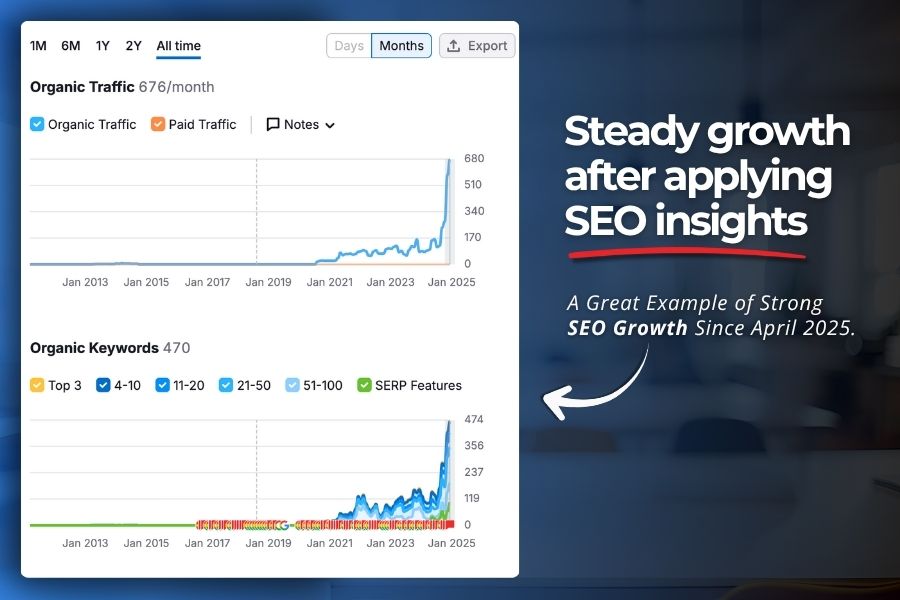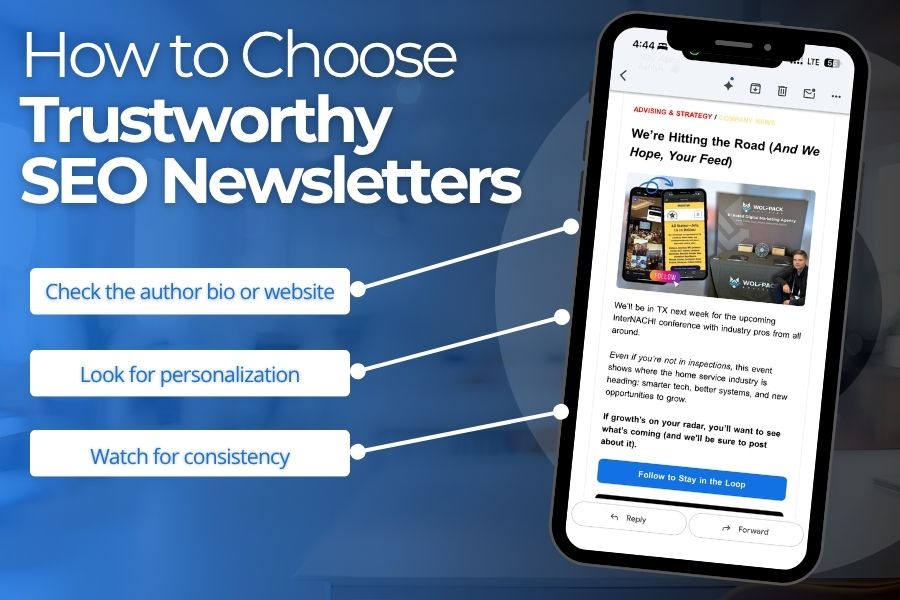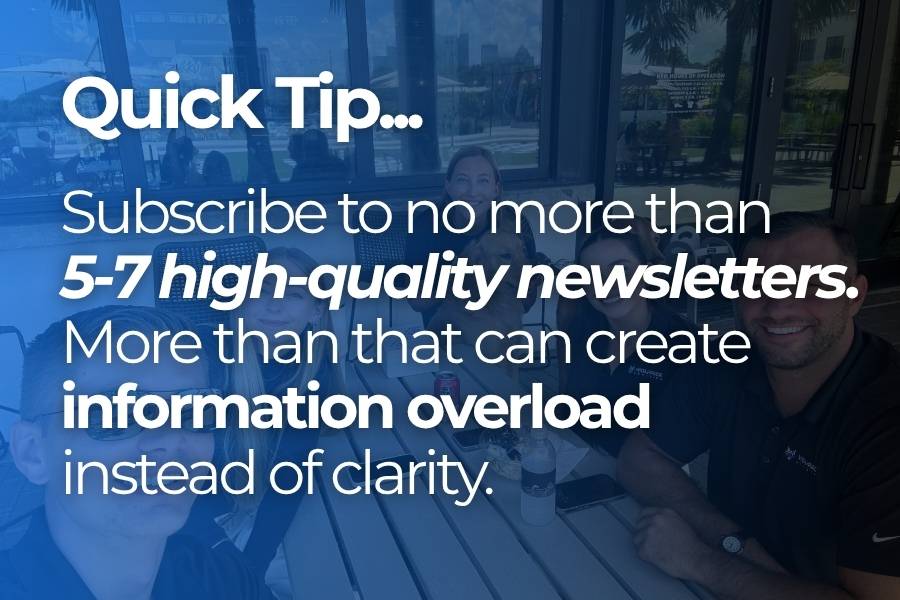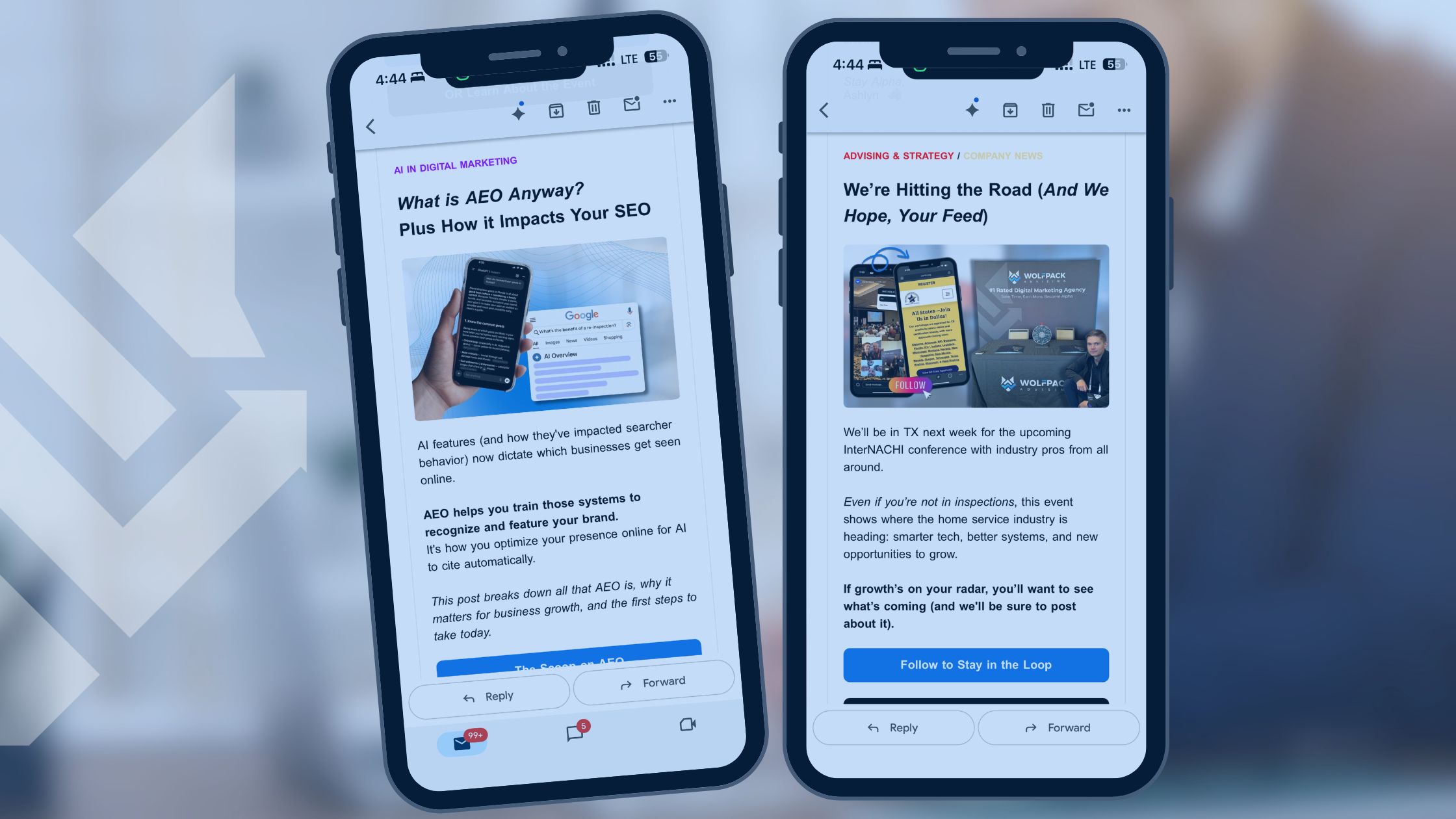Last updated on October 23rd, 2025 at 02:11 pm
Running a business means juggling a lot of sales, operations, customer service, and everything in between. Staying updated on SEO can easily fall to the bottom of the list. But if you want your business to keep showing up when customers search online, SEO needs to stay on your radar.
That is where the best SEO newsletters come in. These quick, informative emails help business owners stay up to date on what matters in search marketing, without needing to spend hours reading blogs or attending webinars.
In this guide, we will walk you through the best SEO newsletters for business owners, what makes them valuable, and how to use them to grow your business online.
Contents
What Makes the Best SEO Newsletters Worth Subscribing To?
The best SEO newsletters are not just lists of tips. They are filters for quality, relevance, and trust. Great newsletters do three key things:
| Criteria | Description | Example |
|---|---|---|
| Expertise | Written by active SEO professionals | Backlinko by Brian Dean |
| Frequency | Consistent schedule (weekly or biweekly) | Lidia Infante’s SEO newsletter |
| Actionability | Clear, usable takeaways | Ahrefs Digest |
| Relevance | Updated to reflect 2025 trends | Google Search Central Blog |
- Simplify complex topics. They turn algorithm updates, AI changes, and ranking data into actionable steps.
- Deliver fresh insights. They share unique case studies, experiments, and thought leadership you will not find on every blog.
- Save you time. They curate what matters most so you can stay informed without constant searching.
If a newsletter checks these boxes; expert authorship, recent insights, consistent delivery, and actionable advice, it is worth subscribing to.
The Best SEO Newsletters Every Marketer Needs in 2025
After reviewing top sources like Lidia Infante, Backlinko, and Igniting Business, we curated a list of the most insightful, practical, and well-written SEO newsletters available right now.
Here are the best SEO newsletters every marketer should read:
| Newsletter | Author / Brand | Focus Area | Why It’s Great for Business Owners |
|---|---|---|---|
| Backlinko Newsletter | Brian Dean | SEO strategy and traffic growth | Clear, tested SEO tips anyone can use |
| Lidia Infante’s SEO Newsletter | Lidia Infante | Search diversity and trends | Helps you understand how SEO evolves |
| WolfPack Insights Newsletter | WolfPack Advising | AI and SEO trends | Real data and success stories from businesses like yours |
| Ahrefs Digest | Ahrefs | SEO tools and analytics | Great for learning data-driven SEO basics |
| SEOFOMO | Aleyda Solis | SEO news and jobs | Quick weekly updates on what’s changing |
| Moz Top 10 | Moz | General SEO education | Perfect for beginners and business owners |
| Search Engine Roundtable | Barry Schwartz | Google updates and insights | Learn about changes before they affect you |
| Search Engine Journal (SEJ) | SEJ Team | SEO guides and trends | Balanced mix of tutorials and news |
| Igniting Business SEO Newsletter | Igniting Business | Small business SEO | Simple, actionable tips for local companies |
How to Build Your Ultimate SEO Newsletter Stack
Each newsletter offers a different angle, from AI-driven insights to local SEO tactics. Together, they form a powerful combination for any marketer serious about mastering search.
Collecting SEO newsletters is easy, organizing and using them effectively is where most marketers struggle.
Here is how to build a newsletter stack that actually fuels your growth.
1. Subscribe with Intent
Do not sign up for everything at once. Pick 5–7 newsletters based on your goals:
- Beginner-friendly? Try Moz Top 10 or Igniting Business.
- Advanced tactics? Choose Backlinko, Lidia Infante, and Ahrefs Digest.
2. Sort by Category
Create folders or labels in your inbox:
- “Strategy”: Backlinko, WolfPack Insights
- “Tools”: Ahrefs Digest
- “News and Updates”: SEOFOMO, Search Engine Roundtable
3. Automate Curation
Use tools like Feedly, Notion, or Zapier to save key articles and tag them by topic. This creates a searchable SEO knowledge base.
4. Review Once a Week
Block 30 minutes on Fridays to review the week’s insights and note 1–2 actionable ideas for your content or campaigns.
WolfPack Workflow Example:
Our strategists maintain a Hubspot dashboard that tracks newsletters by source, topic, and key takeaway. This keeps the entire team aligned on trends and experiments worth testing.
How to Use SEO Newsletters to Improve Your Strategy
Reading newsletters is step one. Using what you learn is what drives results.
Here is how to turn those weekly insights into measurable performance gains:
- Update Your Keyword Strategy
If you notice multiple experts mentioning the same search trend, it is time to refresh your keyword list. - Enhance Your Content Calendar
Use newsletter takeaways to identify gaps in your current blog or video strategy. - Improve Technical SEO
Stay updated with algorithm rollouts from Google Search Central or Barry Schwartz’s reports to maintain rankings. - Educate Your Team
Forward high-value insights to your content writers or clients. This helps them understand the “why” behind SEO decisions.

The Role of AI in Modern SEO Newsletters
Artificial intelligence now plays a big role in how SEO newsletters are created and shared. Many publishers use AI tools to summarize updates, highlight trends, and deliver faster content.
AI-powered newsletters can:
- Filter out low-quality news so you only see what matters.
- Summarize key SEO changes for quick reading.
- Share early data on Google updates before they go mainstream.
While this can save time, business owners should be careful. Not every AI-generated newsletter is reliable or relevant. Some lack real-world insight or human perspective.
When used wisely, AI can enhance newsletters, but authentic, human-driven content still delivers the most value for business owners who want advice they can trust and apply.

How to Leverage SEO Newsletters and Social Media Together
To stay ahead in SEO, business owners should use both newsletters and social media, each serves a different purpose and works best when combined.
SEO newsletters give you reliable, curated insights straight from experts who analyze data and test strategies.
Social media, on the other hand, helps you stay connected to real-time discussions, quick updates, and emerging trends.
Here’s how to get the most out of both:
- Use social media for discovery. Follow SEO professionals and agencies to spot breaking news, experiments, or algorithm updates.
- Rely on newsletters for depth. Subscribe to trusted sources that explain what those updates actually mean and how to apply them to your business.
- Combine what you learn. Save key posts from social media, then look for deeper explanations or strategies in your favorite newsletters.
- Share insights with your team. Use both channels to spark discussion, plan content ideas, or adjust your SEO approach.
Social media keeps you aware. Newsletters keep you informed. Together, they make your SEO learning smarter and more strategic..
How to Create Your Own SEO Newsletter Stack Routine
Once you subscribe to the best SEO newsletters, the next step is consistency.
Here is a simple weekly routine that any marketer or business owner can follow to stay organized and turn insights into action:
Monday: Scan inbox for top updates and flag potential tests.
Wednesday: Discuss newsletter insights during team syncs.
Friday: Apply one new learning to a live campaign or case study.
Tracking implementation turns passive reading into active improvement. Over time, your newsletter stack becomes a living knowledge engine for your business.

Related Questions Marketers Ask About SEO Newsletters
Are SEO newsletters still worth reading in 2025?
Absolutely. Despite AI and social feeds, newsletters remain one of the few owned media channels where experts share authentic, tested strategies.
What is better: blogs, newsletters, or podcasts for SEO learning?
All three have value. Newsletters are best for quick updates and actionable ideas. Blogs are better for deep dives. Podcasts help with thought leadership and interviews.
Can I use newsletters to train my SEO team?
Yes. Use them as weekly learning material. Each team member can summarize one key insight from their favorite newsletter during your weekly sync.
How often should I read or review SEO newsletters?
You do not need to read every issue as soon as it hits your inbox. Set aside one time each week, like Friday morning, to review highlights, save key insights, and mark one actionable takeaway to test next week.
What is the best way to organize SEO newsletters?
Use folders or tools like Feedly and Notion to group newsletters by theme, such as Strategy, Technical SEO, and AI in Search. This keeps your inbox organized and helps you find insights faster when planning new campaigns.
Conclusion
The best SEO newsletters are your ongoing education system, giving you curated, expert-backed insights faster than social feeds or search results. Whether you are managing client campaigns or optimizing your own brand, the right mix of newsletters can keep your strategy informed, creative, and data-driven.
Start with a few of the top recommendations above, then build your personalized SEO newsletter stack to stay ahead of every trend. And if you are ready to turn those insights into measurable results, schedule a free consultation with WolfPack Advising today. Our team will help you transform data-driven SEO insights into strategies that grow visibility, traffic, and leads, powered by the same research and trends featured in the best SEO newsletters.
Subscribe to the WolfPack Insights Newsletter for exclusive updates on SEO, AI optimization, and content marketing strategies built from real client data.






